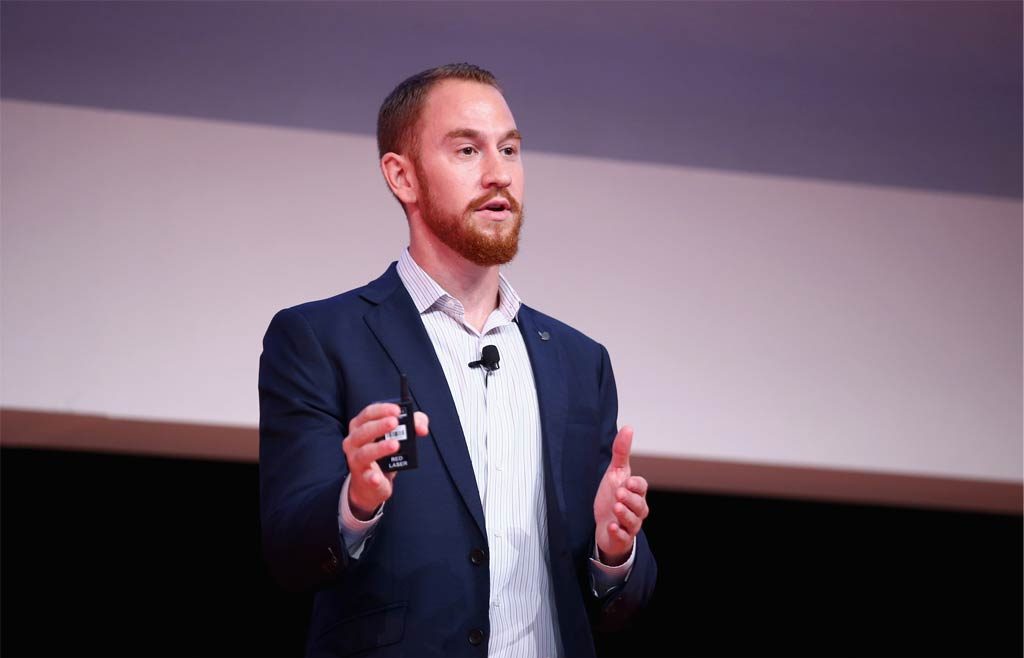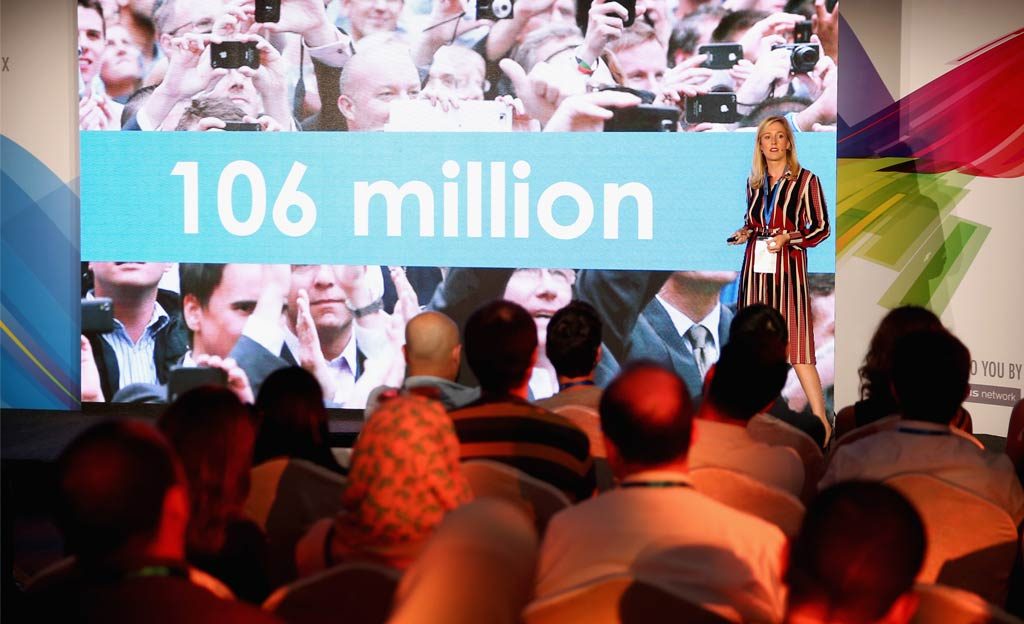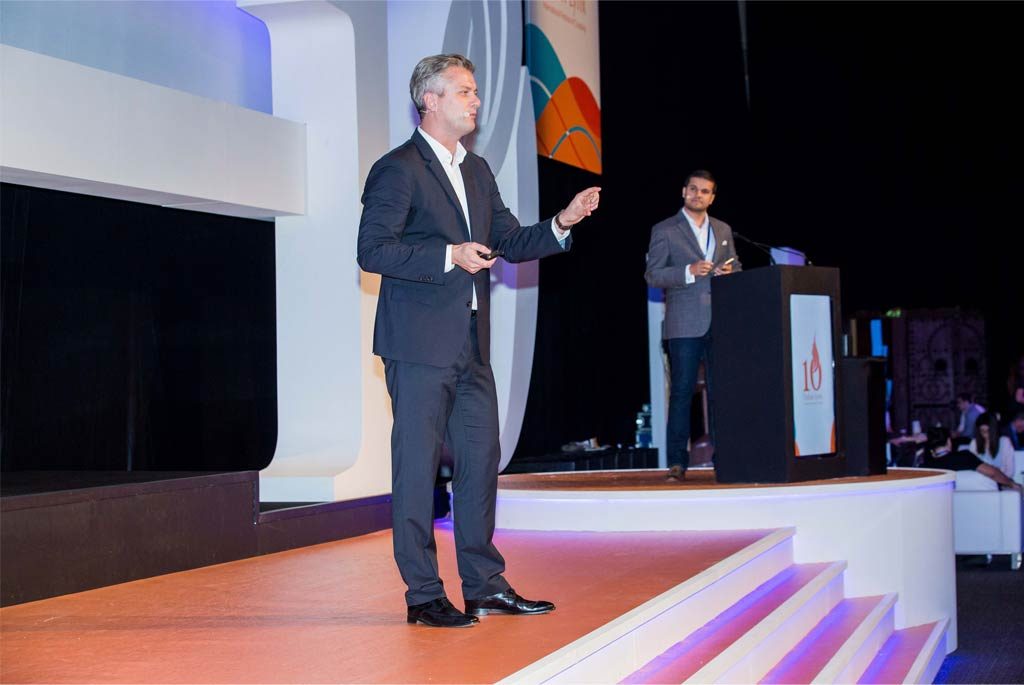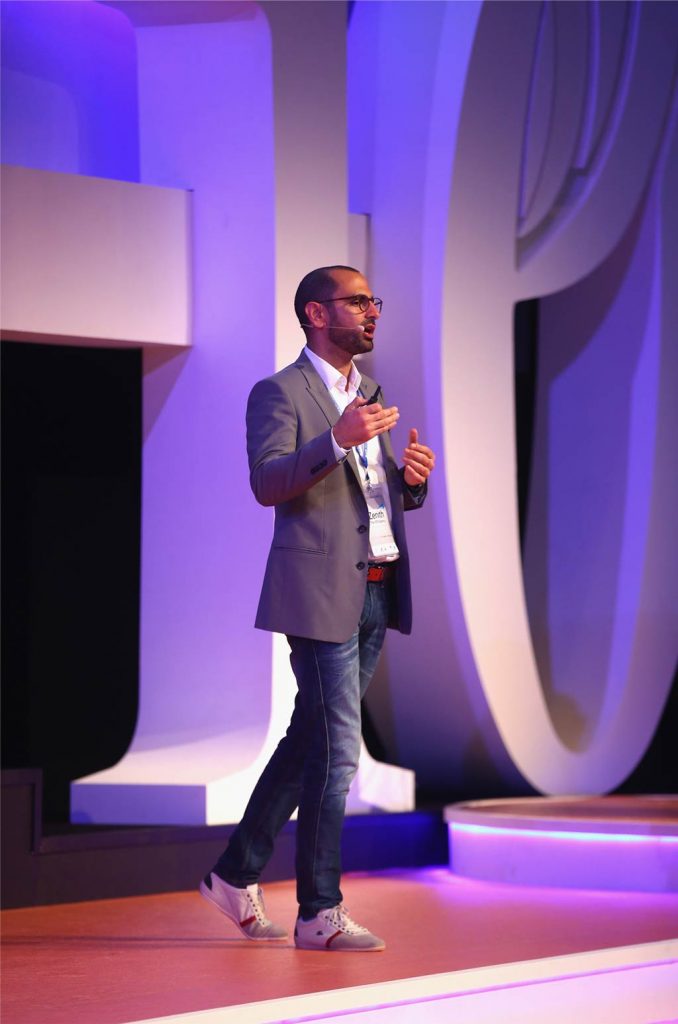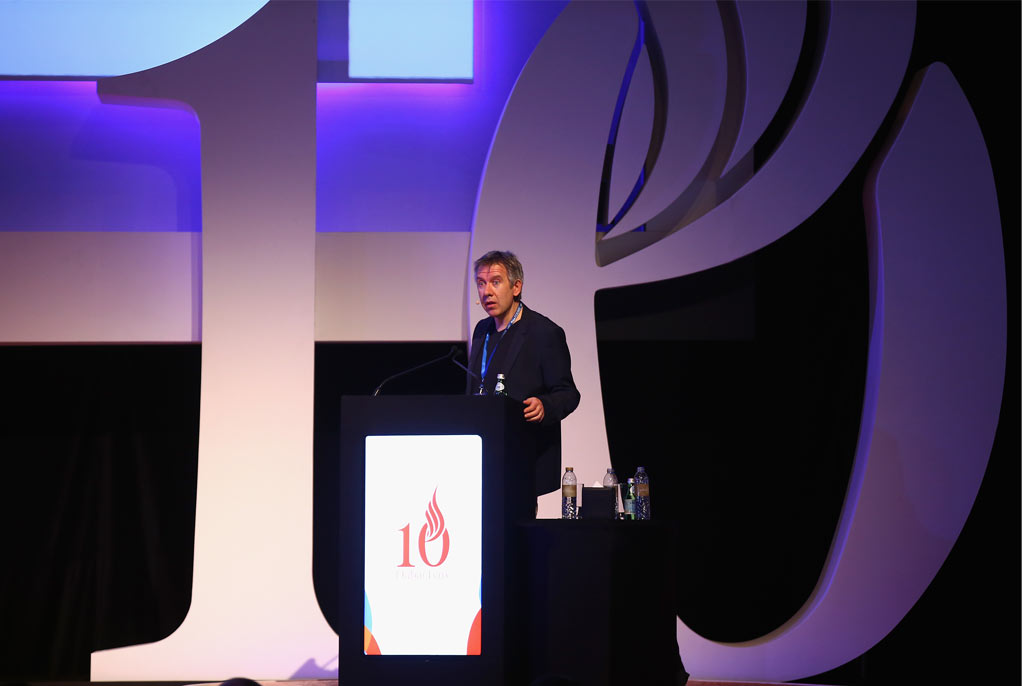Interactive videos are growing, the age of the emoji is upon us and VR’s catching on.
If you missed the kick-off of the Dubai Lynx 2016 edition, fret not. From sessions on the inspiration stage, walk-about installations to the latest trends in tech and advertising, here we highlight everything you need to know – what we like to call a ‘window’ into one of the most refreshingly creative festivals in the UAE.
Starting with the booths, we need to give a shout-out to ‘The Collective’ for the free caffeine boosts they’re blessedly providing the ad-crowd with.
Look out for the life of the party – the charming #PHDrobot, Titan, who speak Arabic, flirts, dances, generously gives you the Wifi password and sings you a ballad while you take a selfie. We dare you not to smile at his sly comments.
Speaking of sly, speakers on Day 1 came with their arsenal full of insight from numerous fields – Digital, design, research and copywriting.
Like a sponge, we soaked in every word at these five Dubai Lynx 2016 Day 1 sessions:
1. Twitter as a Creative Canvas
“Prepare to be spontaneous,”
Ross Hoffman
Hoffman, the Senior Director of Global Brand Strategy at Twitter took the stage to showcase the importance of letting your customers shape your brand story and how user feedback from Twitter allows successful data-driven storytelling.
He expressed, through several examples, that by using original content creators [like calligraphy artists], or even collaborations with YouTube and Vine influencers in conjunction with Twitter polling cards for user feedback, your brand story and messages are more likely to resonate with the audience.
Look up: #BendTheRules campaign.
2. Creative Success in the Mobile Age
“People are becoming really good at tuning out irrelevant generic nonsense,”
Ema Linaker, Edelman
On the Innovation stage, audience nodded their heads at Linaker as she took us through the most significant campaigns of the past [VW Think Small, I’d like to buy the world a coke, and Red Bull’s Felix Baumgatner] and explained how accelerated technological growth and mounds and mounds of data are at our disposal, yet remain unused by creatives in the ideation process.
In search of a ‘Spielberg moment’, where something revolutionary happens to transform the message and platform, she urged that barriers need to be broken; data and creative need to sit at the same table to combine smart data analysis with ideation to carefully cater to users who have become immune to ‘digital vomit.’
Look up: Nike+ active users bespoke videos
3. Jumeirah Inside: Harnessing the Power of Consumer Curiosity
“Technology has been useful, but it has also been overwhelming,”
Ali J. Hashmi
Head of Emerging Travel, Hashmi, and Ross McAuley of Jumeirah Group, gave us a sneak peek at the ideation process behind the 360 degree virtual reality experience of Jumeirah hotels that got unprecedented user interaction in the digital sphere.
From their initial research, with MediaMonks, they moved beyond images, videos on YouTube to VR experience – an immersive journey through the luxury of the Burj Al Arab.
Look up: Google Cardboard
4. Humanizing Content
“Don’t use the CTR to measure how a piece of content works – a high CTR means that your headline worked.”
Rami Saad
Saad from Digital Media Services made the crowd a little less guilty for indulging in clickbait posts on social media. Breaking down how the brain stores memories, Saad showed how authentic content can blur the line between our own experiences and stories we’re told – this means there’s room for real connection with the audience.
He shed light on what stimulates curiosity [inadequacy of information, need to feel competent, and urgency to solve problems] and how curiosity and false promises can damage your brand equity [because you can’t always pass by the original bull**** sensor – the human brain- unnoticed].
Focus on authentic, valuable, quality content instead, not empty headlines.
Look up: Your Facebook timeline
5. ‘Stop Writing Radio Commercials’ and Other Great Advice
“While peoples’ minds are always occupied, their hearts are open. Aim for the heart.”
Philip Maes
Funny, concise and wise, Maes , along with writers from Y&R NY and TBWA, gave the audience great advice for copywriting: Underwrite, over-prepare, kill the voice over, use a s recognizable and repeatable structure and try crap.
On a medium with no room for fluff, Maes presented a strong argument for why emotional strategies win over rational campaigns – ‘Aim for the heart,’ he says.
FYI: If you want to win a radio award, let the music kick in after 3 seconds of the ad [According to Maes, it’s one of the magic components].
Look up: Mercedes Benz Used Car Radio Commercial



